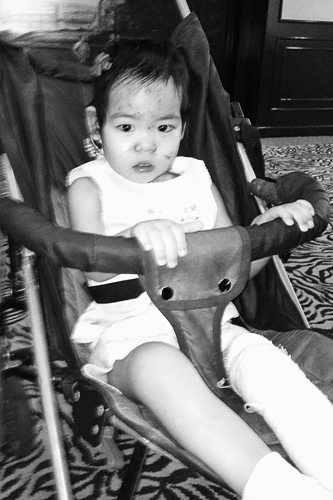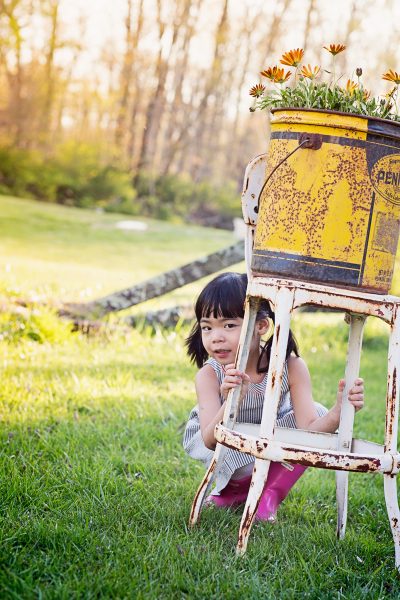Epidermolysis Bullosa (ep-i-der-mo-lie-sis bu-low-suh), abbreviated as EB, is a rare, genetic disorder that impacts connective tissue. Approximately 200 children a year in the U.S. are born with EB, and it’s known as “The Worst Disease You’ve Never Heard Of”.
Children with EB are referred to as “butterflies” due to the fragility of their skin. There are several major types, and a number of subtypes within each type. EB presents as fragile skin that can blister and tear from minor friction or trauma. Internal organs and bodily systems can also be affected. Basically, there is a defect of the gene that connects skin to your body and there is nothing for the skin to anchor to.
Currently, there is no cure and daily wound care, pain management, and protective bandages to prevent infection are the only existing options for EB treatment (debra of America). EB is considered a rare or orphan disease as it affects a small percentage of the population.
I was on a business trip that involved a time change and sound asleep when I unexpectedly received the call. As I roused myself from a jet lagged induced sleep, the agency consultant said that she had a very important question to ask (oh no, I thought, some sort of mistake in the mound of paperwork submitted?), and then continued with, “I have the file of a little girl…”
“What?” I managed to say as she repeated her question, followed by, “Yes, yes, of course, yes!” She provided additional information regarding the process and the link to a website for information on EB. I had heard of EB, but that was basically the extent of my knowledge.
The email contained two attachments: the original report in Mandarin, along with several pictures, and a separate attachment that contained the English language translation. I had planned to look at the translated information and make an informed, rational choice before viewing the pictures – but of course I immediately went to the pictures!
The photos of her wounds really frightened me; they looked very painful, and my heart broke for her.
I was really unsure. There was a brief mention of her diagnosis, EB, in the information provided and I immediately researched and continued to educate myself about EB. Once I returned home, I began to call International Adoption Clinics (IAC), pediatric dermatologists, EB Specialists and researchers, each time fully expecting a negative response. Instead each expert responded “manageable” regarding her care, and I realized that I wasn’t calling to determine whether or not to accept her referral.
Unbeknownst to me at the time, that decision had already been made. Almost immediately – in my heart – this was my daughter and I was calling on her behalf… preparing myself and advocating for her and lining up the best medical care possible for her.
In China, I was a first time parent and scared. She was so small….

I had done extensive research, her children’s home had demonstrated a dressing change during our visit, and another EB mother had thoughtfully left detailed instructions and contact information… I was ready.
The first dressing change took forever. I was terrified that I was going to hurt her and my heart broke again the first time I saw her wounds as she bravely remained still and silent in what had to be a painful process.
Once home, in addition to the usual, expected medical appointments, we also visited a number of EB related specialists, including a pediatric dermatologist, a special needs dentist, and Cincinnati Children’s Hospital (CCH), one of several EB centers in the US.
We’re fortunate to live in an area with access to good medical care and EB professionals. Reflecting back on that time, it was a learning curve (mostly due to the fact that I was a first time parent), and could be a bit overwhelming at times.

However, we have hit our stride. In addition to routine medical appointments, we continue regular appointments with her EB team. Dressing changes occur several times a week and are part of our routine, simply an added step following bath time and brushing teeth before bed. We order bandages online, and they arrive promptly.
EB is a serious, lifelong condition. However, apart from bandaging, extra medical appointments, and a few other concessions, she is like any other girl her age. She loves anything Disney, she loves to draw and play, and her favorite color is purple.

The EB community is amazing. I can’t say enough great things. From debra’s nurse educator who promptly and patiently answered my endless questions and educated me about EB, to the EB team at CCH for all of their continued, valuable support.
I will forever be thankful to everyone who has supported and continues to support this journey. The EB community is very active, very organized, and advances are being made. There is information concerning care as well as practical matters such as insurance coverage. This community is always quick to respond and provide encouragement.
Despite its rarity, there are many resources available. Here are resources that I’ve found helpful:
Butterflies Beyond Borders
Cincinnati Children’s Hospital
Dystrophic Epidermolysis Bullosa Research Association of America (debra of America)
Dystrophic Epidermolysis Bullosa Research Association of America (international)
EB Lounge (closed FaceBook group)
Johns Hopkins International Adoption Clinic
McKesson Medical Supplies
I feel immense pride for my daughter, and am deeply humbled by her and others impacted by EB – butterflies are so brave. I have tremendous respect for these extraordinary children and their families.
– guest post by Kimberly; professional images by Gayle Tiller Photography

























Leave a Reply